Khor Virap (Armenian: Խոր Վիրապ, lit. 'deep dungeon') is an Armenian monastery located in the Ararat Plain in Armenia, near the border with Turkey, about 8 kilometres (5.0 mi) south of Artashat, Ararat Province, within the territory of ancient Artaxata. The monastery was host to a theological seminary and was the residence of Armenian Catholicos.
Khor Virap's notability as a monastery and pilgrimage site is attributed to the fact that Gregory the Illuminator was initially imprisoned here for 13 years by King Tiridates III of Armenia. Saint Gregory subsequently became the king's religious mentor, and they led the proselytizing activity in the country. In the year 301, Armenia was the first country in the world to be declared a Christian nation. A chapel was initially built in 642 at the site of Khor Virap by Nerses III the Builder as a mark of veneration to Saint Gregory. Over the centuries, it was repeatedly rebuilt. In 1662, the l...Read more
Khor Virap (Armenian: Խոր Վիրապ, lit. 'deep dungeon') is an Armenian monastery located in the Ararat Plain in Armenia, near the border with Turkey, about 8 kilometres (5.0 mi) south of Artashat, Ararat Province, within the territory of ancient Artaxata. The monastery was host to a theological seminary and was the residence of Armenian Catholicos.
Khor Virap's notability as a monastery and pilgrimage site is attributed to the fact that Gregory the Illuminator was initially imprisoned here for 13 years by King Tiridates III of Armenia. Saint Gregory subsequently became the king's religious mentor, and they led the proselytizing activity in the country. In the year 301, Armenia was the first country in the world to be declared a Christian nation. A chapel was initially built in 642 at the site of Khor Virap by Nerses III the Builder as a mark of veneration to Saint Gregory. Over the centuries, it was repeatedly rebuilt. In 1662, the larger chapel known as the "St. Astvatsatsin" (Holy Mother of God) was built around the ruins of the old chapel, the monastery, the refectory and the cells of the monks. Now, regular church services are held in this church. It is one of the most visited pilgrimage sites in Armenia.
King Artashes I, founder of the Artashesid dynasty, established his Armenian capital at Artashat (also known as Artaxtisata) around 180 BC. It is believed that Hannibal, the Carthaginian General who was persecuted by Rome, was also instrumental in establishing Artashat.[1] Artashat remained the capital of the dynasty till the reign of King Khosrov III (330–339) when it was moved to Dvin.[2] Subsequently, Artashat was destroyed by the Persian King Shapur II.[3] Artashat is close to the hillock of Khor Virap.[4] Until its chapel was built, Khor Virap was used as royal prison.
 Baptism of Tiridates III by St. Gregory
Baptism of Tiridates III by St. GregoryWhen King Tiridates III ruled over Armenia, his assistant was the Christian Grigor (Gregory) Lusavorich who preached the Christian religion. However, Tiridates, a follower of pagan religion, was not pleased with having an advisor with a different religion, and he subjected Gregory to severe torture. When news reached the king that Gregory's father Anak the Parthian was responsible for the murder of the king's father, the king ordered that Gregory's hands and legs be tied and that he be thrown into the Khor Virap to die in the dark dungeon located in Artashat. In addition, Gregory's refusal to offer sacrifice to the goddess Anahita provoked the king to torture him and condemn him to imprisonment in the Khor Virap.[5] He was then forgotten and the King waged wars and persecution among Christian minorities.[6] However, Gregory did not die during his 13 years of imprisonment. His survival was attributed to a Christian widow from the local town who, under the influence of strange dream vision, regularly fed Gregory by dropping a loaf of freshly baked bread into the pit.[6]
During this period, the Roman Emperor Diocletian wanted to marry a beautiful girl, and sent agents to search for the most beautiful woman. They found a girl named Rhipsime in Rome, who was under the tutelage of Abbess Gayane in a Christian nunnery. When Rhipsime heard about the king's[clarification needed] marriage proposal, she fled to Armenia to avoid the marriage. A search was launched to locate the girl and punish the people who had helped her escape, and eventually Tiridates located Rhipsime and forcibly brought her to his palace. After unsuccessfully trying to woo her, he ordered that she be dragged into his presence by putting a collar around her neck in hopes to persuade Rhipsime to agree to marry him.[6]
However, what ensued was the persecution and murder of Rhipsime, Gaiane and many Christians. Tiridates went mad and is "said to have behaved like a wild boar while torments fell on his household and demons possessed the people of the city".[7][8] It was then that Tiridates's sister, Khosrovidhukt, had a vision in the night, where an angel told her about the prisoner Gregory in the city of Artashat who could end the torments with the words "when he comes he will teach you the remedies for all your ills".[6] People did not place much reliance on this vision, as most thought that Gregory had died within days of his being cast into the pit. But Khosrovidhukt had the same dream repeatedly, eventually threatened that if the dream's instructions were not followed, there would be dire consequences. Prince Awtay was deputed to get Gregory from Kirat Virap. He went to the pit and shouted to Gregory, saying "Gregory, if you are somewhere down there, come out. The God whom you worship has commanded that you be brought out". Gregory was brought out in a miserable state. He was taken to the king, who had gone mad "foraging among the pigs at Valarshapar", tearing his own skin. Gregory cured the king and brought him back to his senses. Gregory knew of all the atrocities committed, and saw the bodies of the martyrs who were later cremated. The king, accompanied by his court, approached Gregory, seeking forgiveness for all the sins they committed. Henceforth, Gregory started preaching Christianity to the king, his court, and his army.[6]
King Tiridates, who had embraced Christianity as his religion following the miraculous cure effected by Gregory's divine intervention, proclaimed Christianity as the state religion of Armenia in 301 AD. Gregory became the Bishop of Caesarea and remained in service of the King until about 314 AD.[2][8] Another version attributed to Tiridates's conversion to Christianity is that it was a strategic move to create national unity to checkmate the hegemony of Zoroastrian Persia and Pagan Rome, and since then, the Christian Church has acted as a strong influence in Armenia.[9]
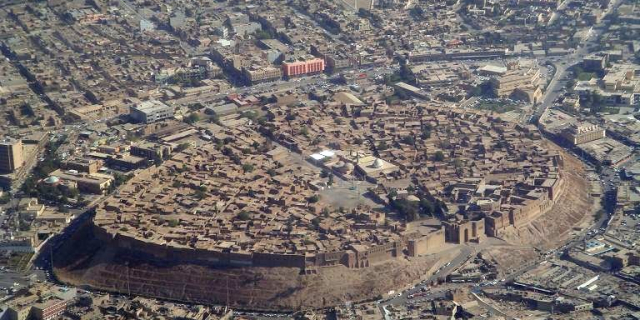

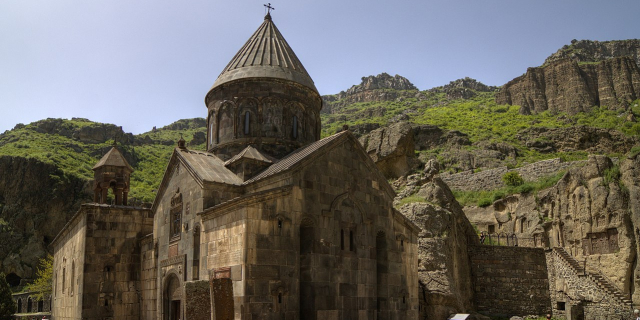





![[node:title]](/sites/default/files/styles/640x320/public/pla/images/2021-03/Monasterio_Khor_Virap%2C_Armenia%2C_2016-10-01%2C_DD_25.jpeg?h=7c882872&itok=TSlbC6VX)

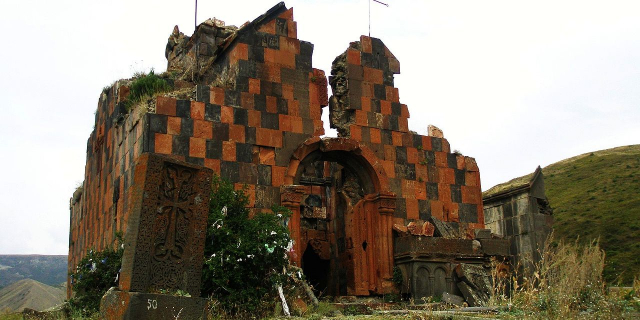


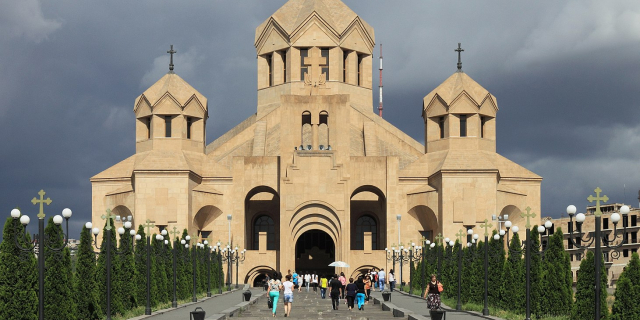


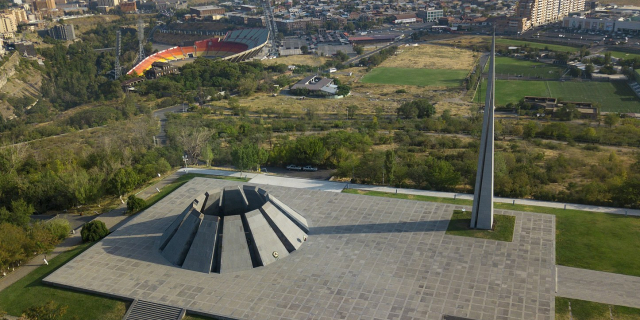

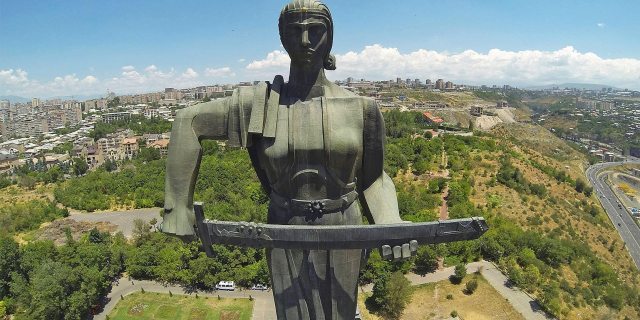








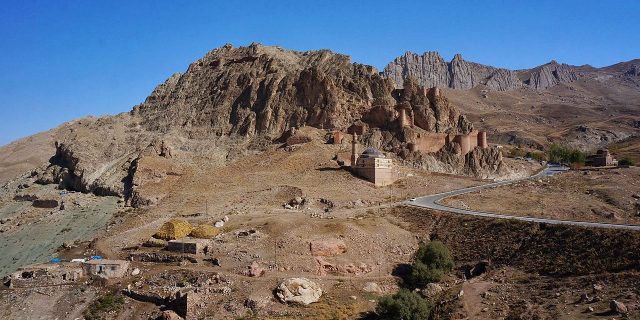



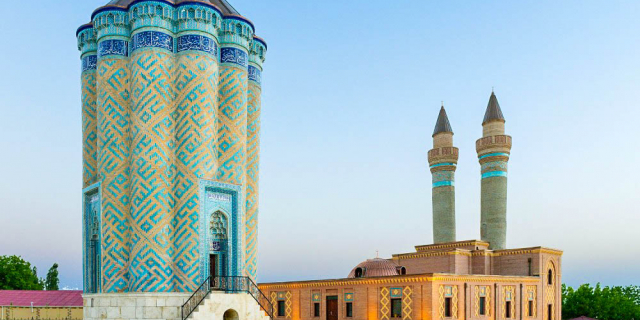

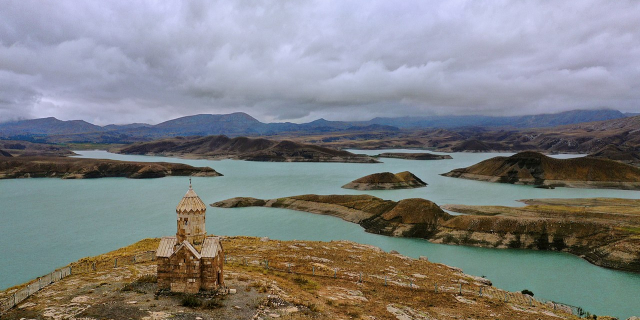
Add new comment